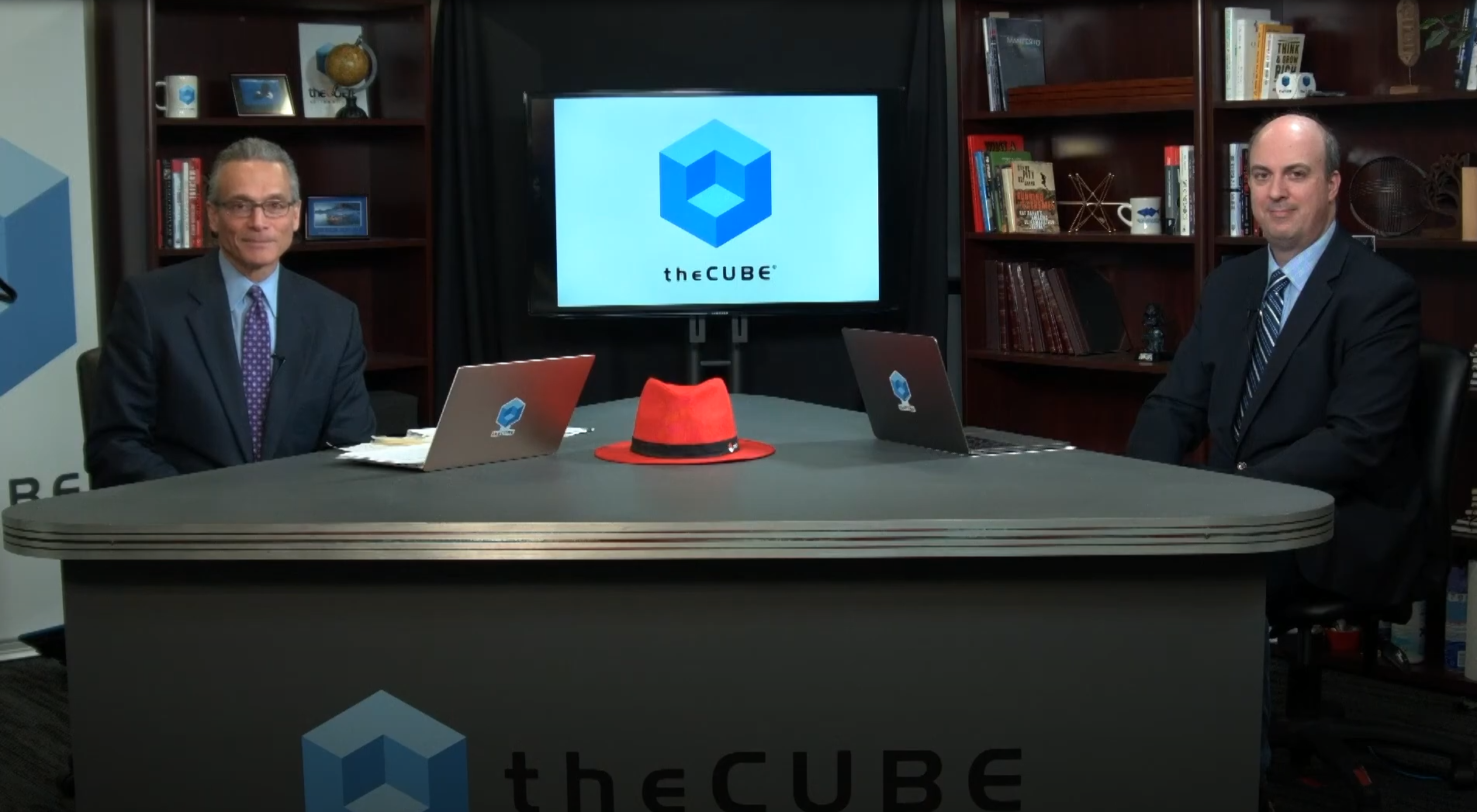 CLOUD
CLOUD
 CLOUD
CLOUD
 CLOUD
CLOUD
Even in normal times, it would be unlikely that IBM Corp. and Red Hat Inc. would make news this week for the usual reasons.
Red Hat kicked off its virtual Summit on Tuesday in an online format after being forced to cancel plans for its annual gathering in San Francisco due to the COVID-19 pandemic. Although the open-source company made a number of product announcements, industry analysts were more interested in Red Hat’s impact on IBM, both from a financial standpoint and in terms of strategic direction.
“Most of the product pieces were out front,” said Stu Miniman, co-host of theCUBE, SiliconANGLE Media’s mobile livestreaming studio. “It’s open-source anyway; we know when it’s coming for the most part. What does Red Hat do for the cloud story at IBM?”
Miniman spoke with Dave Vellante, co-host of theCUBE, during their keynote analysis at the start of the Red Hat Summit Virtual Experience. They discussed recent financial results, IBM’s new senior management, the latest product announcements, and maintaining relevance in the hybrid cloud. (* Disclosure below.)
Much of the focus on Red Hat has been centered around the firm’s potential impact on IBM’s earnings, following its acquisition for $34 billion, which was finalized in 2019. In an announcement last week, IBM disclosed that revenue from Red Hat rose 18% on a normalized basis, despite an overall decline for the parent firm of 3.4% in the most recent quarter.
“The key here is the revenue growth for Red Hat,” said Vellante, who noted that IBM’s previous chief executive — Ginni Rometty — had made certain commitments when the business was acquired. “She said this was going to be free cash flow accretive in year one. They’ve already achieved that. They said this was going to be earnings per share accretive by year two, and they are already well on their way to achieving that.”
Of perhaps even greater interest among analysts was the approach and strategic vision of IBM’s new senior management. Longtime IBM veteran Arvind Krishna became the company’s new CEO in early April and former Red Hat chief executive Jim Whitehurst was named president of IBM.
“Arvind is a technical visionary, and it’s high time that IBM got back to being a technology company first because that’s what IBM is,” Vellante said.
What will that technology vision look like? This week’s announcements focused significantly on Kubernetes support, with a preview of OpenShift virtualization, designed to deploy and manage applications running in virtual machines.
Red Hat also rolled out version 4.4 of OpenShift, which will use Kubernetes Operators to manage applications.
“OpenShift really has strong momentum,” Miniman said. “Red Hat is well positioned across the stack to not only be the platform for it, but also help with all the pieces to modernize applications. If you talk about where the leadership is in the Kubernetes space, Red Hat absolutely needs to be in that discussion.”
Red Hat’s announcements on Tuesday included Advanced Cluster Management for Kubernetes, a single control point for monitoring OpenShift clusters at scale.
“This is an answer to what we’ve seen in the Kubernetes community for the last year,” Miniman said. “There’s not one Kubernetes distribution to rule them all. I’m going to use what my platforms have and then manage across my various cloud environments.”
IBM’s Krishna has made it clear that he intends to add the hybrid cloud as a fourth enduring platform to the company’s vast portfolio, complementing its existing strength in mainframes, middleware and services.
“Long term, it’s about maintaining IBM’s and Red Hat’s relevance in the hybrid cloud world,” Vellante said. “That really is critical from a strategy standpoint.”
Here’s the complete video analysis, part of SiliconANGLE’s and theCUBE’s coverage of the Red Hat Summit Virtual Experience. (* Disclosure: TheCUBE is a paid media partner for the Red Hat Summit Virtual Experience. Neither Red Hat, the sponsor for theCUBE’s event coverage, nor other sponsors have editorial control over content on theCUBE or SiliconANGLE.)
Support our mission to keep content open and free by engaging with theCUBE community. Join theCUBE’s Alumni Trust Network, where technology leaders connect, share intelligence and create opportunities.
Founded by tech visionaries John Furrier and Dave Vellante, SiliconANGLE Media has built a dynamic ecosystem of industry-leading digital media brands that reach 15+ million elite tech professionals. Our new proprietary theCUBE AI Video Cloud is breaking ground in audience interaction, leveraging theCUBEai.com neural network to help technology companies make data-driven decisions and stay at the forefront of industry conversations.